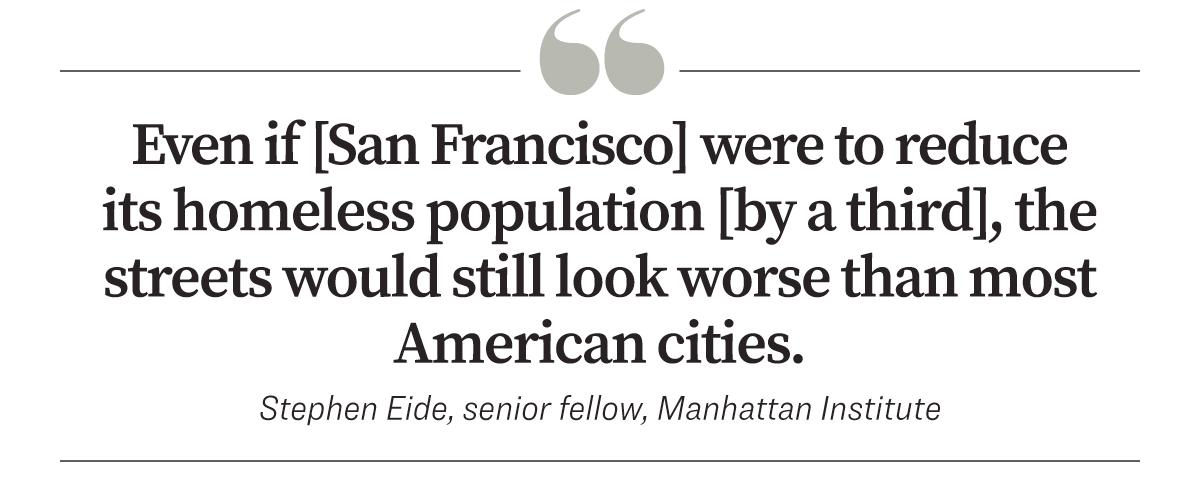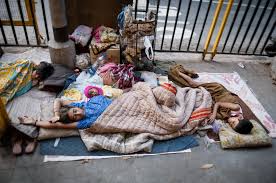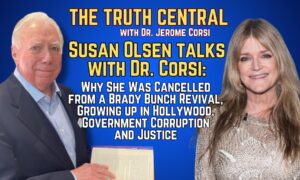Overwhelmed with homeless people, cities and towns seek relief from the trap of having to either provide housing or leave encampments alone.
The homelessness crisis in America is set to come to a head with a Supreme Court ruling as early as this spring, in the case of Johnson v. City of Grants Pass, Oregon.
The Supreme Court could—depending on what it decides—force changes in city ordinances and homelessness policies across the country.
The decision is one of the most anticipated in years for San Francisco and other cities facing legal challenges from homeless people and advocacy groups.
At the heart of the case is the challenge by three homeless people to ordinances in the Oregon town of Grants Pass that prohibit homeless people “from using a blanket, pillow, or cardboard box for protection from the elements.”
The U.S. Court of Appeals for the Ninth Circuit, drawing on logic applied in the 2018 decision in Martin v. City of Boise, sided with the plaintiffs and blocked Grants Pass from enforcing its ordinance in the absence of shelters or other accommodations for the homeless.
The decision applies across nine western states, Alaska, Arizona, California, Hawaii, Idaho, Montana, Nevada, Oregon, and Washington.

Officials are left with two unappealing choices: let the sprawling encampments stand, or provide immediate emergency housing far beyond what their strained budgets allow for.
The Supreme Court, which announced on Jan. 11 that it will review the case, must either uphold or throw out the 9th Circuit’s ruling.
With close to 600,000 homeless people in America, according to recent Department of Housing and Urban Development figures, many cities that are bickering about what to do are paying attention to the case.
In Los Angeles, some 75,000 people live on the street, and the current mayor’s first action on taking office was to declare a homelessness state of emergency.
In San Francisco, the crisis is so severe that residents are fleeing a city they have long cherished as one of the world’s most beautiful and livable locales, not to mention a dynamic tech hub. Nearly 8,000 people now live on the streets there.

Rampant public drug use, panhandling, urination, defecation, and other unruly conduct have taken over some areas of the City by the Bay and the city’s administration’s inability to enforce its own laws and clear out homeless encampments makes the crisis much worse.
“San Francisco is a mess, and even if it were to reduce its homeless population modestly, by a third, the streets would still look worse than most American cities,” Stephen Eide, a senior fellow at the Manhattan Institute who studies homelessness and public policy, told The Epoch Times.
The city is a battleground for myriad legal, social, economic, and political forces amid rising public alarm about homelessness. Lawyers there want to press pause on their own court battle over an injunction forbidding the police from cracking down on homeless camps. In their view, the looming Supreme Court case will render other legal struggles moot.
Homelessness advocates insist that longstanding legal precedent guarantees rights to people living on the street, and the city is not free to disregard those rights and take away homeless people’s property without due process, just because some of the homeless commit more serious violations and spark a public outcry.
But others who have studied the issue find providing housing for ever-growing numbers of homeless to be an unsustainable burden for cities and towns struggling to stay solvent.






https://1abakan.ru/forum/showthread-63012/
http://uaforum.ukrbb.net/viewtopic.php?f=6&t=1431
http://xn--48-6kcd0fg.xn--p1ai/forums.php?m=posts&q=19964
https://parkauto.forum-top.ru/viewtopic.php?id=86#p223
https://wiggles.ruka.at/wiki/index.php/Mp3bit.pw_2
http://mublog.ru/interesnye-novosti/obschaya/eyvolyutsiya-zvuka-populyarnye-muzykalnye-albomy-s-nachala-90-h.html
http://catalog.drobak.com.ua/communication/forum/user/2652182/
http://woman.build2.ru/viewtopic.php?id=11979#p39169
http://artem-energo.ru/forums.php?m=posts&q=16117&n=last#bottom
https://library.kemu.ac.ke/kemuwiki/index.php/Mp3bit.pw_3
http://trum.flybb.ru/viewtopic.php?f=10&t=3833
https://www.yur-dom.ru/communication/forum/messages/forum3/message17/20-istoriya-audioformatov_-ot-vinila-do-striminga?result=new
http://xn--b1acebaenad0ccc3aiee.xn--p1ai/forum/user/2073/
https://www.mylot.su/blog/13499
http://skodarapidclub.ru/forum/showthread.php?p=1585112#post1585112
http://miquelduran.net/index.php?title=Mp3bit.pw
https://dw.kz/forum/?PAGE_NAME=message&FID=12&TID=8804&TITLE_SEO=8804-deep-house-glubiny-zvuchaniya-i-istoricheskiy-put&MID=13917&p=5498&result=new#message13917
http://www.websiteprofit.ru/forum/viewtopic.php?f=17&t=15473
http://sdm-servis.ru/component/fireboard/?func=view&catid=5&id=67627#67627
http://bajajrussia.club/viewtopic.php?f=33&t=81025
https://f-ingdiabolical.com/gallery/image/315-%D1%8D%D0%B2%D0%BE%D0%BB%D1%8E%D1%86%D0%B8%D1%8F-%D0%B7%D0%B2%D1%83%D0%BA%D0%B0-%D0%BF%D0%BE%D0%BF%D1%83%D0%BB%D1%8F%D1%80%D0%BD%D1%8B%D0%B5-%D0%BC%D1%83%D0%B7%D1%8B%D0%BA%D0%B0%D0%BB%D1%8C%D0%BD%D1%8B%D0%B5-%D0%B0%D0%BB%D1%8C%D0%B1%D0%BE%D0%BC%D1%8B-%D1%81-%D0%BD%D0%B0%D1%87%D0%B0%D0%BB%D0%B0-90-%D1%85/
http://www.heerfamily.net/mediawiki/index.php/User:Krystle21G
https://reveal.ru/gate.html?name=Journal&file=display&jid=51200
https://2cool.ru/qiwi-f215/nayti-novinki-muziki-2024-goda-mojno-na-sayte-mp3bit-t2712.html
https://forum.resmihat.kz/viewtopic.php?f=2&t=1863165
http://wiki.edu54.ru/%D0%AD%D0%B2%D0%BE%D0%BB%D1%8E%D1%86%D0%B8%D1%8F_%D0%97%D0%B2%D1%83%D0%BA%D0%B0:_%D0%9F%D0%BE%D0%BF%D1%83%D0%BB%D1%8F%D1%80%D0%BD%D1%8B%D0%B5_%D0%9C%D1%83%D0%B7%D1%8B%D0%BA%D0%B0%D0%BB%D1%8C%D0%BD%D1%8B%D0%B5_%D0%90%D0%BB%D1%8C%D0%B1%D0%BE%D0%BC%D1%8B_%D0%A1_%D0%9D%D0%B0%D1%87%D0%B0%D0%BB%D0%B0_90-%D1%85
https://uwowiki.co.uk/index.php?title=Mp3gid.co